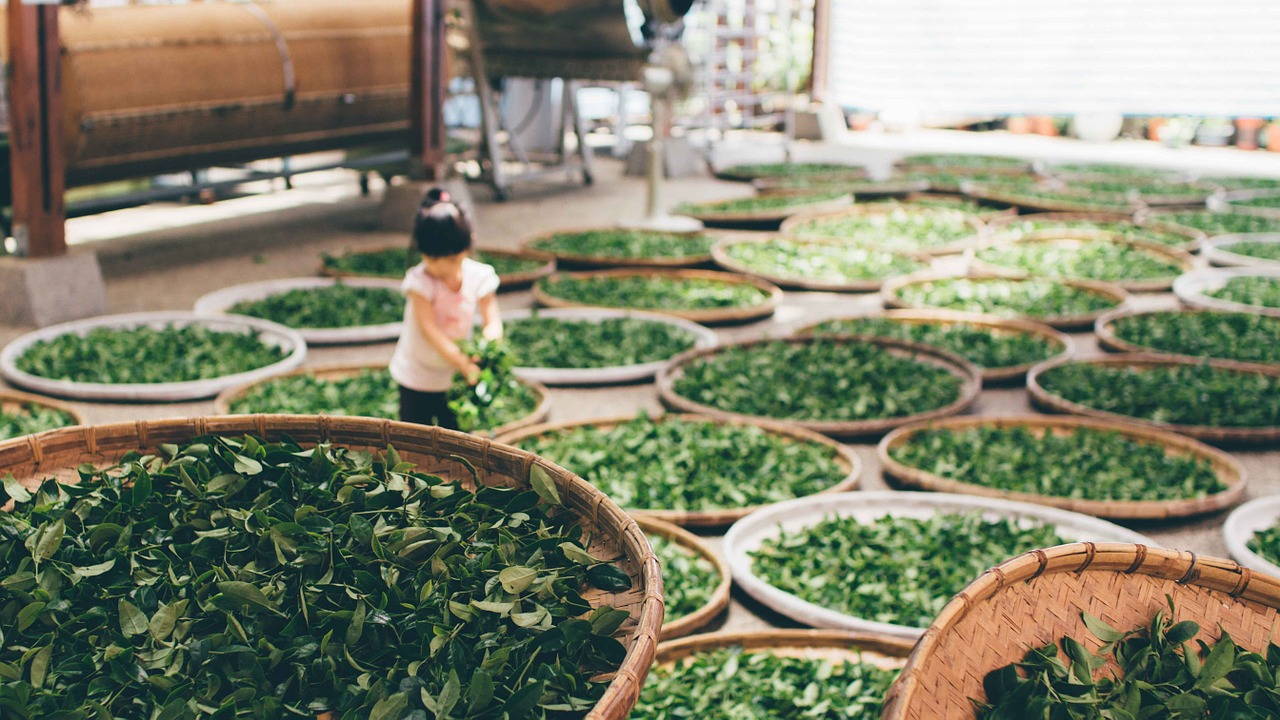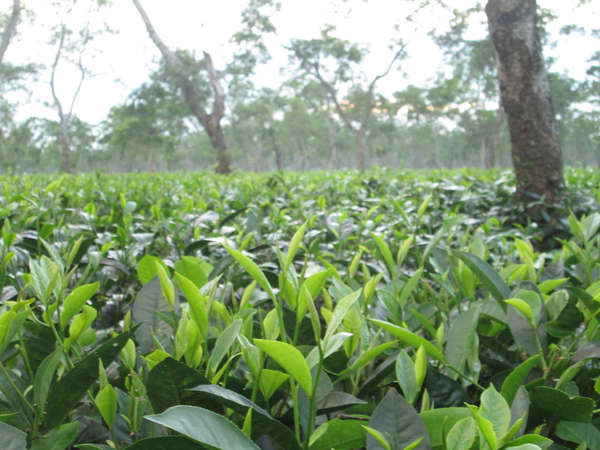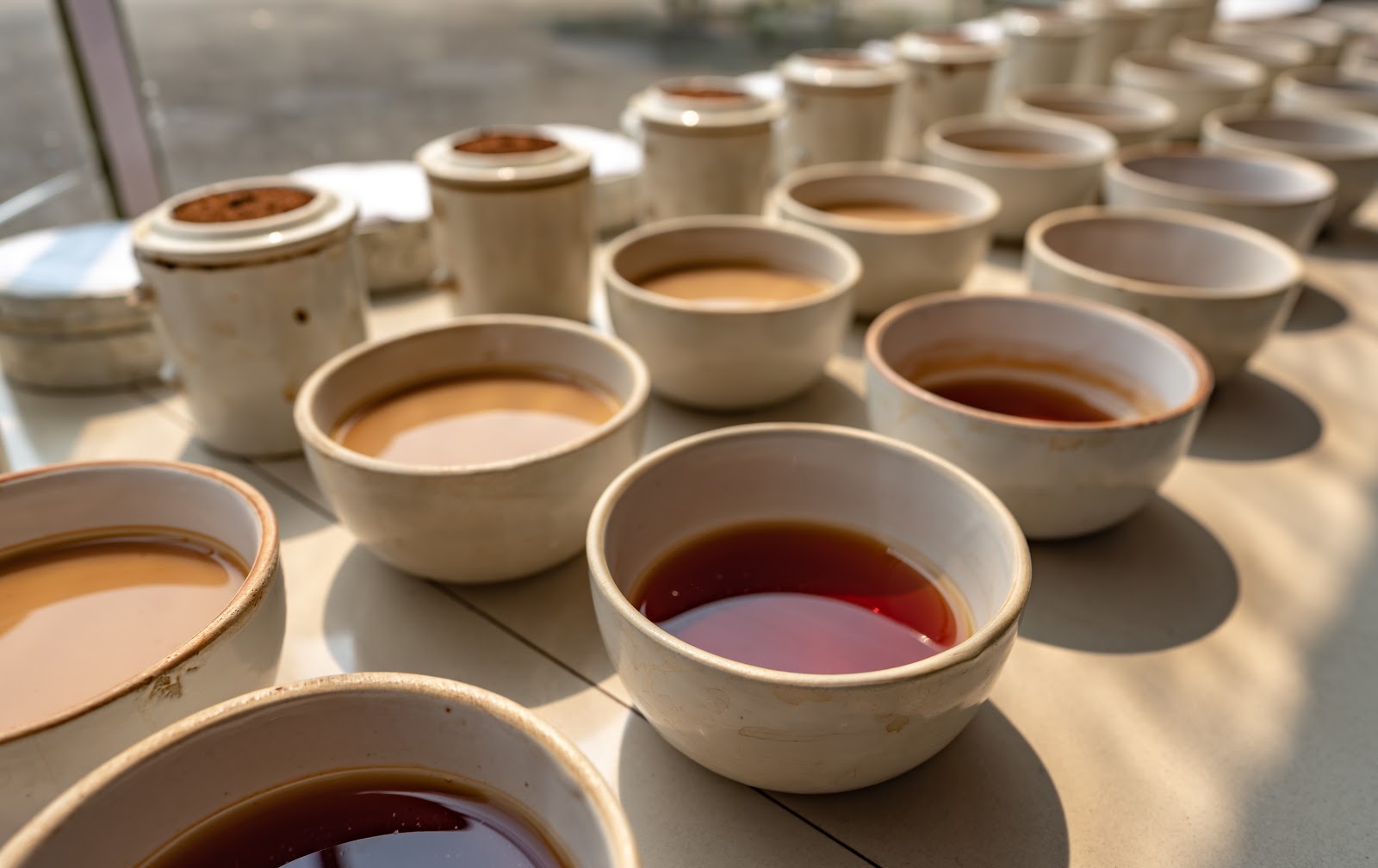Analysis of the detailed production process of tea what is the difference between the production of black tea, yellow tea and black tea? Analysis of the influence of Tea-making steps on Tea Taste
The method by which the tea extracted from the tea tree becomes dry tea is called tea processing. Dry tea is used to brew tea. The processing technology of tea determines the variety of tea. There are four kinds of tea: green tea, white tea, black tea and oolong tea. These teas are made from leaves and buds of tea trees. Sometimes, in order to change the taste of the last kind of tea, one kind of tea may even be mixed with other teas or with different flavors to achieve a special mixture and taste. Processing techniques have different ways and degrees of oxidation involving leaves, as well as stopping oxidation, forming tea and drying it. Finally, the taste of dry tea is caused by the type of tea varieties Bush used to grow the quality of tea also along with the way and the quality of their production and processing. Different types of tea, each has a different taste, taste, smell and visual appearance. The processing technology of all kinds of tea is made up of very similar methods and steps, but with slight changes. It is worth noting that if humidity control and temperature control are not paid attention to during tea processing, fungi are likely to grow on tea leaves. This may make the tea unfit to drink because this form of fungus can lead to real fermentation and contaminate the tea.

Tea picking-usually twice a year, tea is picked from tea trees, including a terminal bud and two young leaves. This kind of picking usually occurs in early or late spring. This kind of flush is more common. Another less common type of tea is tea picked in autumn or winter. Generals often occur in areas and areas where the climate allows picking. For high quality tea, the picking of tea and buds is usually done by hand. Manual picking is also carried out under the condition of low labor cost. The picker's skill is very important because it determines the final product. In the case of hand picking, it pulls the flush by breaking the forearm, arm, and sometimes even shoulder. Pickers pick tea buds with their thumb and index finger, and sometimes use the middle finger in combination. If it is not picked by hand, use a machine. However, this does lead to leaf breakage and partial redness, which reduces the quality of the tea. However, if it is harvested by machine at the right harvest time, it may even produce good leaves that can be used to produce high-quality tea.
Withering-once the tea leaves are picked, they soon begin to wither. In other words, the oxidation of the enzyme begins shortly after the tea is picked. To avoid this, wilting techniques are used to remove excess water from leaves, allowing only a very small amount of oxidation. To remove moisture from the leaves, the leaves are placed either in the sun or in a cool scroll chamber. At this stage, leaves tend to lose more than 1/4 of their weight due to water loss. This process of watering or withering the tea is also essential because it promotes the breakdown of leaf protein into free amino acids. Green-also known as leaf impregnation. In this step, the tea is crushed or torn to promote and accelerate the oxidation of the tea. In order to do this, there will be slight scratches on the edges of the tea. This is done by shaking and throwing tea leaves on a bamboo tray or rolling them in baskets. Wider blade damage can be achieved by kneading, rolling, tearing and crushing. This is usually made of machines. This step helps to decompose the internal and external structures of the leaf cells, leading to the beginning of oxidation. The sap of the leaves will also be released, thus changing the taste of the tea.
Fermentation oxidation-a variety of tea that needs to be oxidized. The tea leaves are left in the climate control room to oxidize, making the tea deeper and deeper. This may be accompanied by different outcomes. In this step, the chlorophyll of the leaves is broken down and the tennis ball is released. This oxidation process is sometimes called fermentation. Kill the green-this step is to take measures to stop the levels required for the oxidation process of leaves to produce all kinds of tea. In order to achieve this goal, the tea was moderately heated to inactivate its oxidase. This process also helps to remove unwanted aromas from the tea without causing any damage to the final taste of the tea. Dull yellow-this method, also known as yellowing, is unique to yellow tea. At the end of the previous stage, the warm and moist tea leaves are gently heated in an airtight container to turn the green leaves yellow. The tea produced by this technology will produce a yellowish-green tea soup with the change of chlorophyll in the leaves. The wet tea leaves can be rolled up into crumpled strips, either by hand or by machine. This process further enhances the flavor of the tea because it makes some juices as well as the essential oils and juices of the tea seep out.
Dry-this is finished selling tea. There are many ways to dry. Tea drying uses techniques such as translation, sunlight, air drying, or baking. Among them, baking is the most commonly used drying method. This step is particularly important for the production of green tea varieties. Aging-not all types of tea require this step. This is an additional aging step, which is just the secondary formation and baking of leaves to reach their drinking potential.
Important Notice :
前街咖啡 FrontStreet Coffee has moved to new addredd:
FrontStreet Coffee Address: 315,Donghua East Road,GuangZhou
Tel:020 38364473
- Prev

Historical story of the origin of Assam black tea where is Assam black tea produced authentic? How much is the authentic Assam per jin?
Assam is one of the most beautiful states in India, famous for its charming river valleys, mountains and hills. In fact, it is surrounded by the Northern Himalayas, the Brahmaputra Plain and the Deccan Plateau, making it one of the most biologically diverse regions in the world. Obviously, the whole state is rich in animals and plants.
- Next

How many kinds of tea are there in Darjeeling tea producing area? What is Darjeeling Tea's history and cultivated tea varieties?
Darjeeling tea is produced in Darjeeling, West Bengal, India. It is found in green tea, white tea, oolong tea and black tea. If brewed properly, Darjeeling Tea is a thin and light-colored brew with a floral scent. Because of its unique flavor and aroma, Darjeeling Tea is often called the champagne in the tea. Darjeeling Tea's
Related
- The milk tea cup becomes smaller?! Overlord Tea Girl launches a new "Return to Yunnan" series
- Accused of selling counterfeit and high-priced coffee beans! Well-known boutique coffee brand "Oukelao" bowed and apologized!
- How to make espresso dumplings? Can I eat coffee and glutinous rice balls together?
- Save the unformed and stagnant powder cakes in one second! What is the problem with stagnant water in the powder bowl of the espresso machine?
- What does hand-brewed coffee stop mean? Why is it not recommended to make coffee by hand?
- Is it normal to smell like coffee? Why does coffee smell like alcohol? What's wrong with the strong smell of cold extract ice dripping ice brewed coffee?
- How to solve the problem that hand-brewed coffee extraction takes too long? Why is the water flowing so slowly when making coffee?
- The main points of making Australian white coffee, the proportion details, how does Australian white properly foam and blend the flowers?
- Can ice water make cold extract coffee? What is the difference between room temperature water and ice water for making cold coffee?
- What milk is best for making latte and white Dirty coffee? What is the difference between different brands of fresh milk and pure milk for making coffee?

